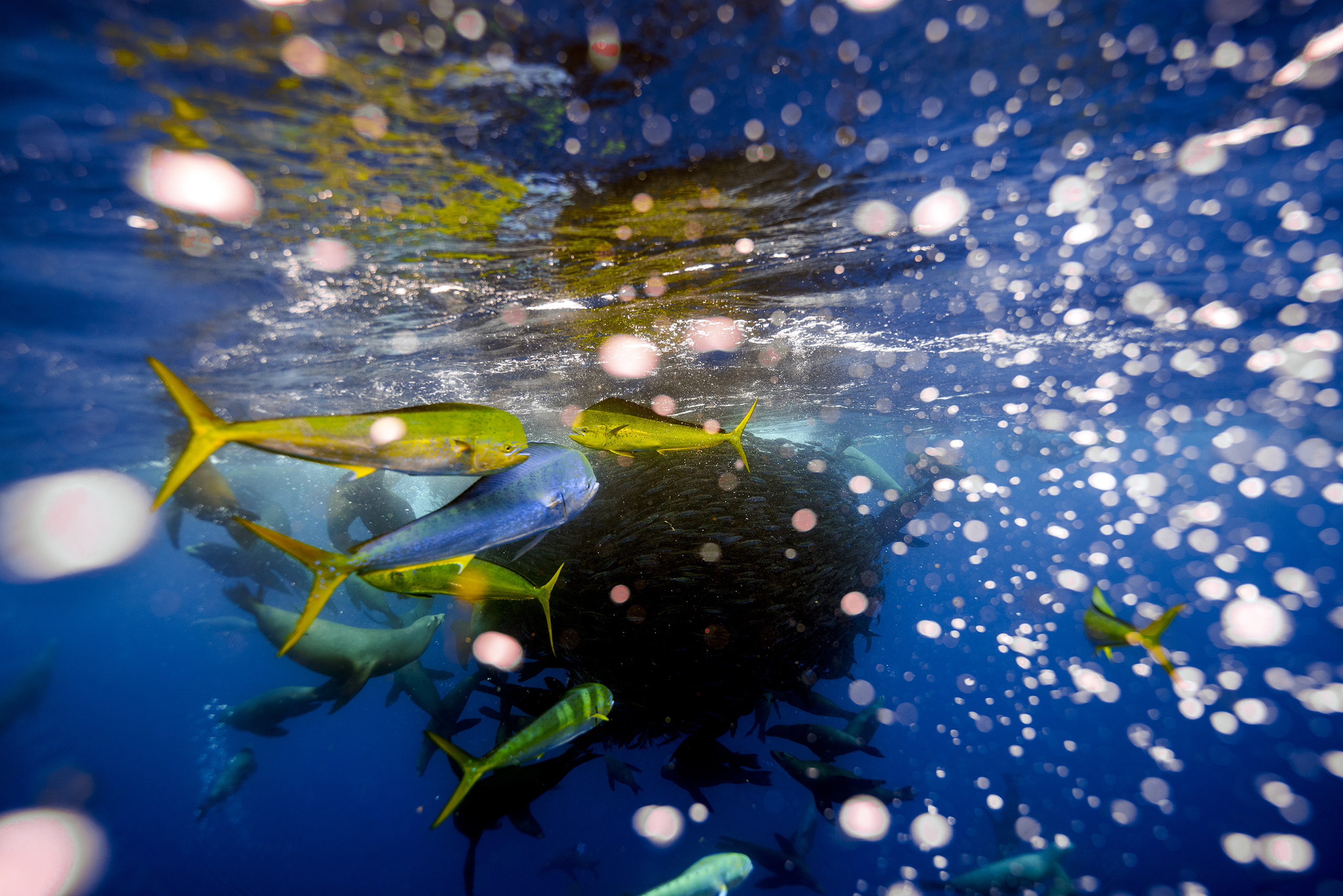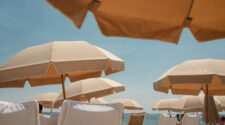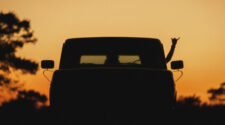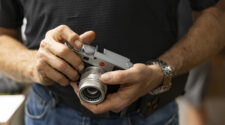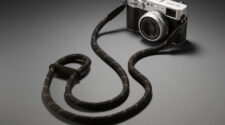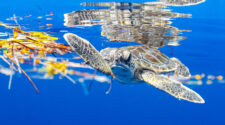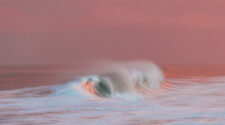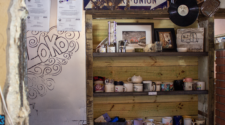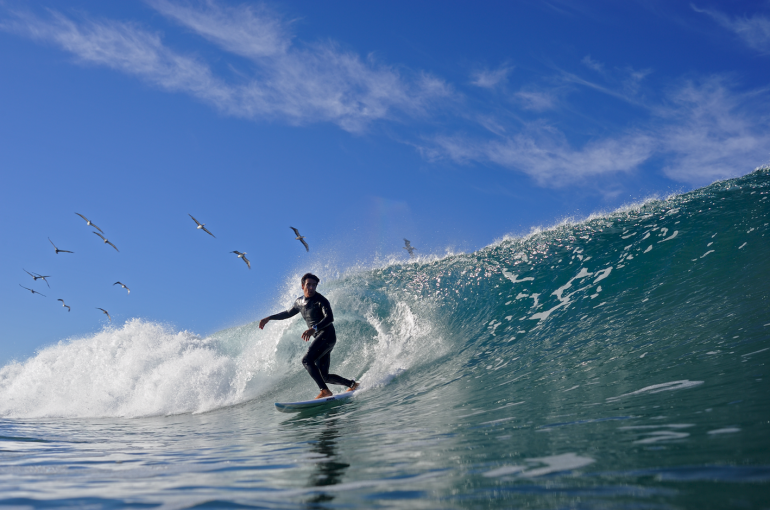Ben Horton, Caleb Jimenez, Brian Hall and Anthony J. Rayburn
Every photo has a story. You know that saying. Well, we didn’t have the real estate for 1,000 words so let’s say these photos are worth about 500 really, really quality words written by the photographers themselves.
On a more serious note, we so enjoyed hearing about the patience, persistence and adventurous nature of these photographers. They’ve captured some truly breathtaking images in their careers and have agreed to share the tale behind these. A lot more goes into it than you might think. Whether it’s a multi-mile walk to the shoot destination or sitting and waiting for hours for a pod of dolphins, these photographers got the shot.
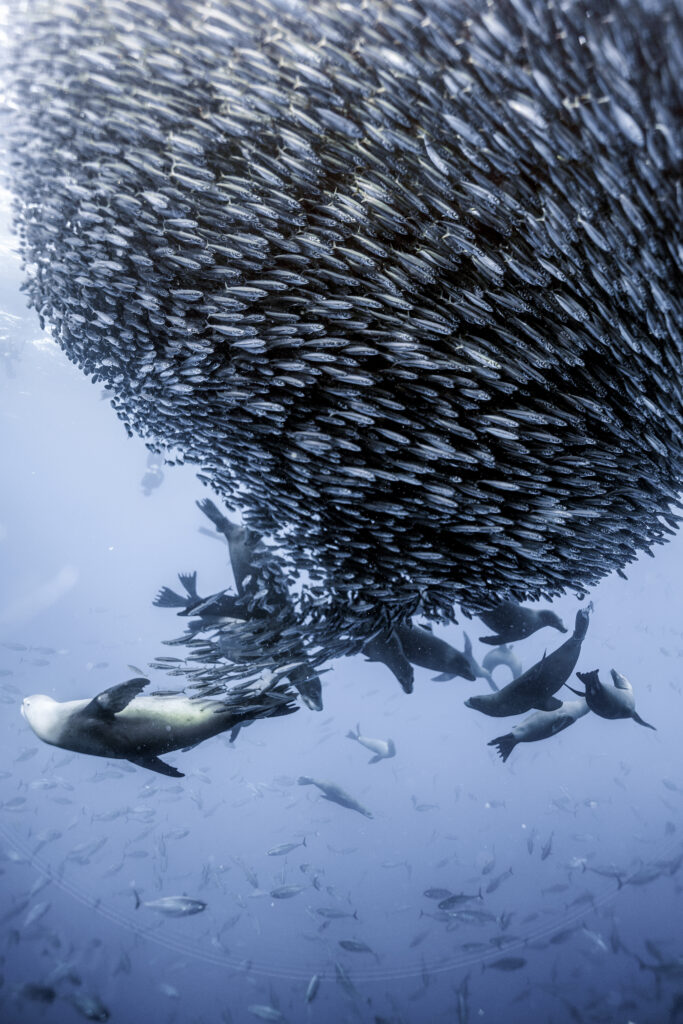
Baja Bait Ball
By Ben Horton
The long and solitary drive through the Baja California peninsula has become a pilgrimage for surfers, motorheads, divers, and those who seek easy access to true exploration. I’ve been driving this peninsula for 12 years, and every time I put the tires on the road, I find something new.
On this repetition of the drive, I heard that the sardine run had begun near Magdalena Bay, and there was a possibility of encountering large bait balls where I could photograph animals predating on the sardines. I had one day to accomplish this, but it seemed like a sure thing, so I pulled into the town of San Carlos and hopped aboard a panga for a pre-dawn exit into the open ocean beyond the protection of the Bay with a few other visitors.
We motored across the open ocean for 40 miles along the side of a mountain range that separates the Bay from the Pacific Ocean. Pushing against the swell was a slow process, but eventually, we began to see signs of life that are surprisingly rare in the ocean’s vastness.
Birds were circling above something, diving repeatedly into the water. As we got closer, we saw the surface of the water frothing with action, and dozens of sea lions were dipping in and out of the turbulence. We’d found the sardines.
There really is no such thing as a dedicated underwater camera, to capture these photos I put my professional camera inside of a housing that protects it from the water. If I am diving deep, I have to use supplementary lighting to add the color red back into the image since deep down, the red is all absorbed by the water it has traveled through. But here, at the surface, it’s not necessary. I prefer the natural look provided by the sun.
The hardest part is figuring out what to focus on, and there seems to be something happening in every direction I look. To my left, sea lions, to my right, dorado, below me a whale passes by, and in front of me the sardines are approaching fast. I don’t really want to let them surround me with all these predators diving in and out of the bait ball.
I spend a few hours in the water, attempting to capture elements of what is happening. It’s hard to focus on the details but to me it’s the details that really tell the story. Once I’ve had a chance to “capture” the scene, I get to start trying to be artistic. I slow the shutter speed down so there’s a bit of motion blur. I move around to the silhouetted side of the action to see what it looks like from there. It’s these unique images that stand out to me.
Motoring back to San Carlos, everyone is exhausted and happy. I mentioned that I was curious why we didn’t look for other bait balls to try to see other species, and a group of three visitors exclaimed, “We’ve been here for a week! This is the first one we’ve seen!” I had no idea that I’d been so lucky.
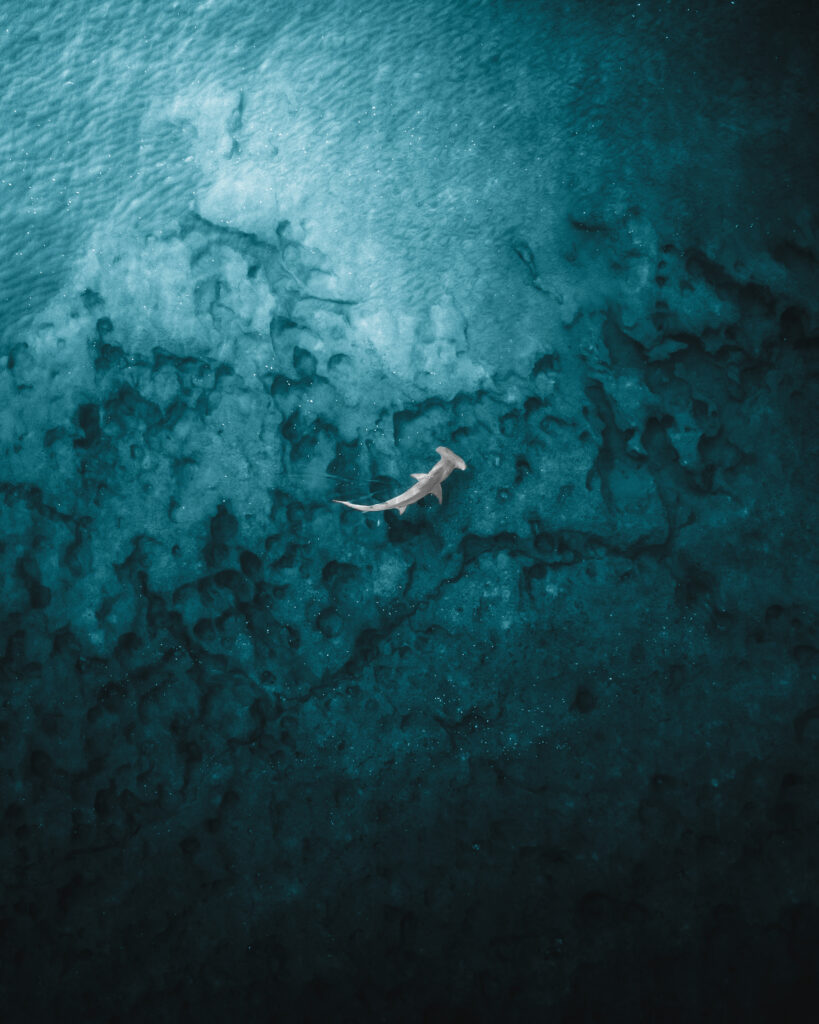
The Great Hammerhead
By Caleb Jimenez
I’ve been flying drones for about eight years now and I try to go out at least five days a week to see what amazing things nature has to offer. But on the morning of June 29, 2023 I saw something with my drone I had never seen before.
I woke up early because the water had been exceptionally clear around that time, and I was hoping to capture some blacktip reef sharks, nurse sharks, dolphins, turtles or eagle rays. I was really hoping to capture a hammerhead shark that I heard was roaming these same waters in the weeks prior. I was flying my drone, on my third battery, when I couldn’t stop thinking about seeing a hammerhead. Not even five seconds later, BOOM, right in the middle of my screen was a great hammerhead shark! I couldn’t believe it. I didn’t know it at the time, but these are listed as critically endangered. It was such an amazing feeling seeing this beautiful shark grace my screen. I was only able to snap a few photos of it because it swam so fast but was fortunately able to capture several videos of it. Since this day I’ve seen a hammerhead once or twice.
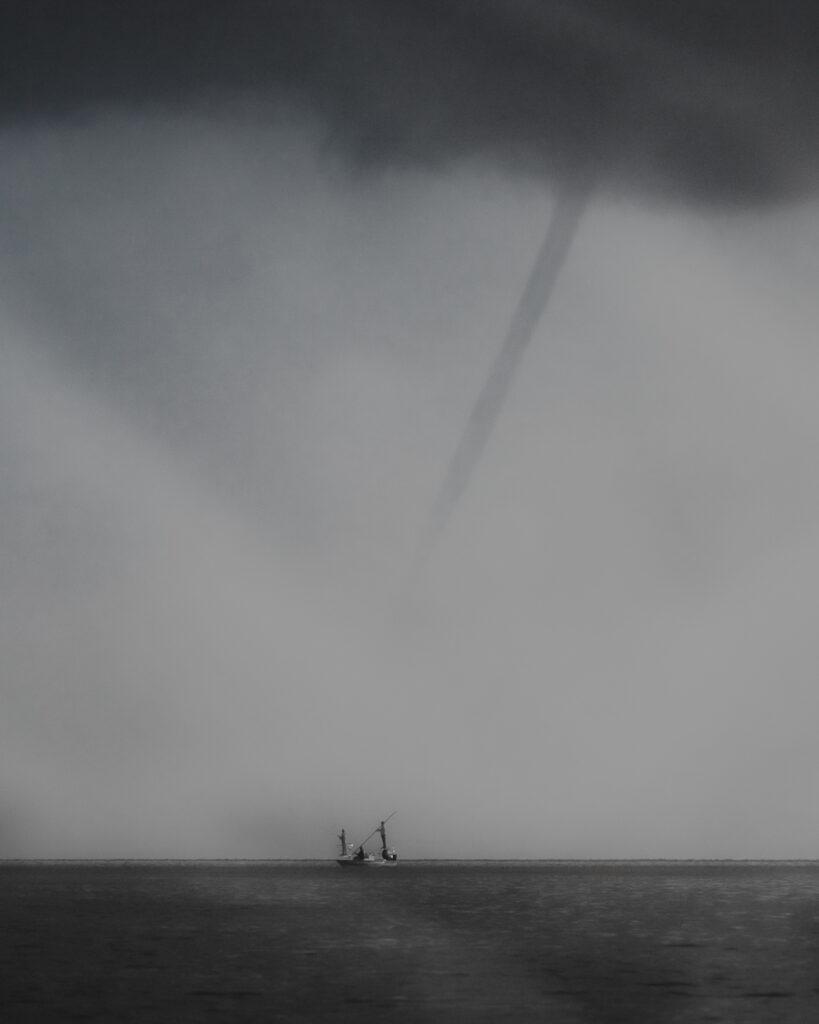
Tarpon Twister
By Brian Hall
Right place, right time. As we pushed off the dock from Islamorada in search of tarpon, our run across Florida Bay was quickly interrupted as we turned our heads north to witness this wild scene.
These tarpon anglers didn’t even flinch, just remained steady on the push pole as they glided across a flat in search of the silver king. I quickly reached for my camera as all of these stars aligned, only to find the lens fogged up from the humid morn- ing at hand, which would lead to the texture on the final image. But I didn’t care. This image is the epitome of how I feel about photography. That ability to truly capture something so wildly unique and rare, and let it live on forever. Needless to say, it’s a brief second of life that I’ll truly never forget.
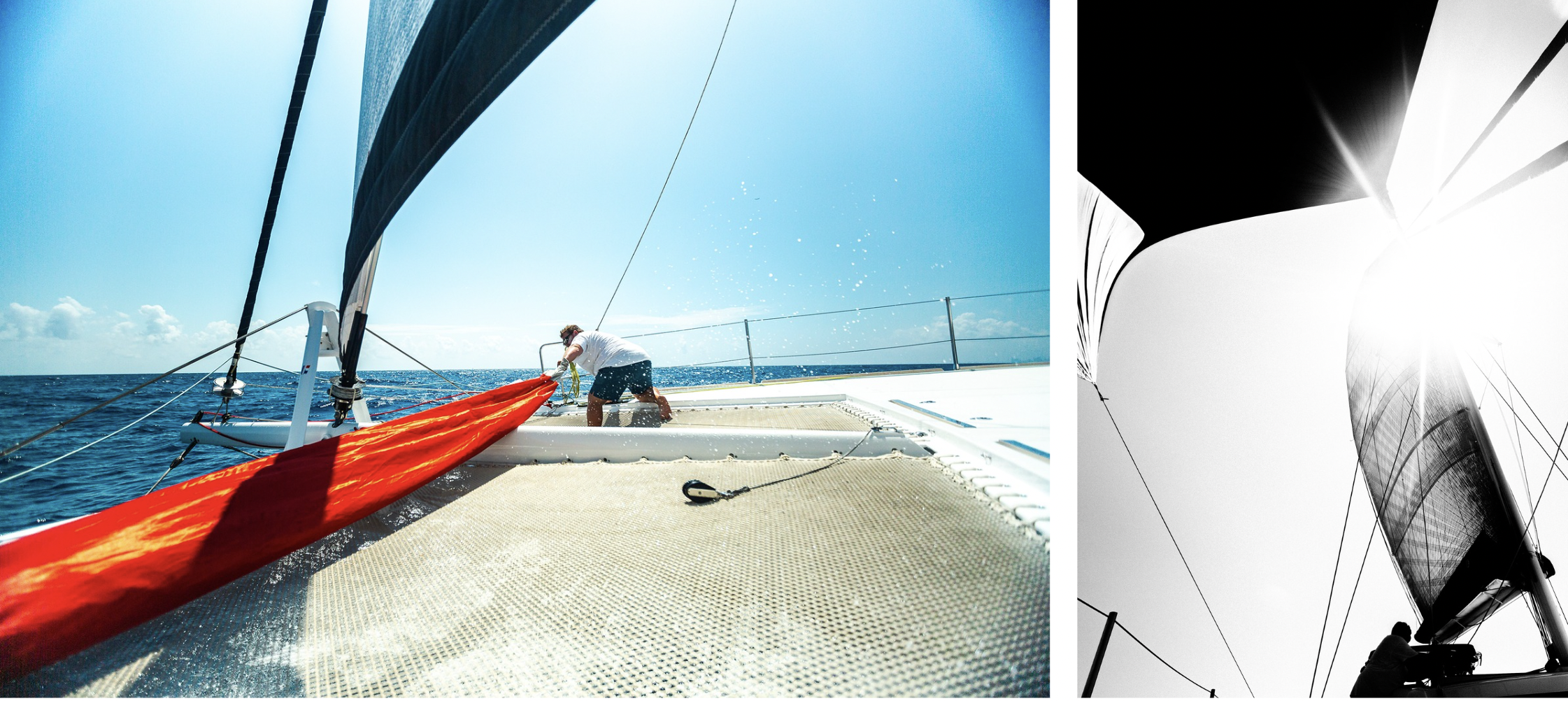
Catana Catamarans
By Anthony J. Rayburn
I’ve come to the conclusion that photographers fall in one of two buckets. Those driven by tech and those driven by experiences. One thing we do all have in common though is we’re all a little nuts, in a good kind of way, and are motivated by the shots we’re left with. A camera has allowed me to have experiences and meet incredible humans that I would have never been able to without one.
I’ve always been attracted to the lifestyle of sailing and all difficult things that come along with it. I have no idea why, it’s mostly miserable. There is just so much that goes into sailing and so much that goes wrong, stuff is always breaking, everything is expensive and everything that needs to be done is grueling to do, and 90 percent of your time is spent doing these things. Then there’s the weather and all the things out of our control.
But there’s something just so sexy about it to me, it’s how we discovered new worlds, the remoteness, the self-dependency, the calculated risks, and everything that has to come together to get that feeling of just traveling by your own means with no sound of an engine.
You’re very limited on where you can go on a boat and limited to what you can bring with you, anticipating what’s going to happen next, staying out of the crew’s way, contributing to all the tasks that need to be done, everything can hurt you seriously. Then you can start thinking about the photograph, the client’s requirements, the product or brand, all with one eye open and one eye on your lens finder trying not to get seasick. Forget about sunglasses… It’s a bit self-sabotaging, intentionally doing these things, but it makes getting a great shot that much more rewarding, especially something commercially viable that would make someone sane want to do the same things.
At the time of this shoot, Catana Catamarans released its new and first Ocean Class catamaran in it’s lineup. Something worthy of crossing oceans at a competitive level but with all the luxuries of a recreational catamaran available to the public. I think the boat had just crossed the Atlantic Ocean from France for the boat show here in Fort Lauderdale. Catamaran Guru, a local dealer and sailing school, was gracious enough to have me out one afternoon to show her off. Everything went our way, the weather was great, we had some great views of the Fort Lauderdale coastline and it was a simple reminder of the joys that come with sailing.
